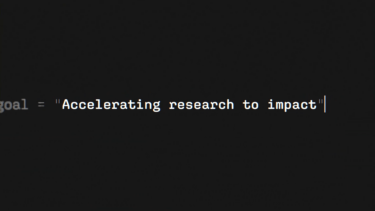Microsoft's Azure cloud platform grew 35 percent year-over-year in the third quarter of fiscal year 2025. While AI services played a significant role, much of the growth came from more conventional cloud usage.
Microsoft Cloud revenue reached $42.4 billion, up 22 percent in constant currency. Total company revenue climbed to $70.1 billion, with earnings per share at $3.46—both surpassing analyst expectations.
AI services contributed 16 percentage points to Azure's overall growth. However, CFO Amy Hood said that the bulk of the unexpected acceleration came from Microsoft's core cloud business. She also noted that it's becoming increasingly difficult to separate AI and non-AI workloads. CEO Satya Nadella cited rising demand for migration and data services, including PostgreSQL, Cosmos DB, and Microsoft Fabric.
More than 70,000 companies built custom AI applications using Microsoft's Foundry platform. Foundry offers access to models from providers including OpenAI, Meta, and Mistral.
Direct AI usage continued to increase. Microsoft processed over 100 trillion tokens during the quarter—50 trillion of those in the final month alone. The sharp rise in token volume may be partly due to the growing use of so-called reasoning models, which tend to generate more internal text as part of their multi-step thought processes before producing a final output.
Adoption of Copilot-branded tools is also increasing. GitHub Copilot now has over 15 million users, more than four times the figure reported last year. Microsoft also reported a threefold increase in Microsoft 365 Copilot users compared to the same quarter in 2024.
That said, the company has not disclosed specific user numbers for Office Copilot. Instead, it points to a 15 percent year-over-year increase in constant currency for its "M365 Commercial Cloud" sales. However, this metric does not shed light on Copilot's actual performance or impact relative to the scale of Microsoft's investments.
Microsoft's infrastructure strategy is becoming more cautious
Despite delivering AI capacity ahead of schedule, Microsoft expects resource constraints beginning in June. Hood referred to "capacity constraints," while Nadella emphasized the need for "power in specific places."
Behind the scenes, the company appears to be scaling back its infrastructure ambitions. According to reporting from SemiAnalysis and other sources, Microsoft has canceled letters of intent for 2 gigawatts of leased capacity and frozen 1.5 gigawatts of planned in-house expansion for 2025 and 2026. Progress on major data center projects has stalled, with construction and infrastructure contracts either paused or delayed.
One potential factor is the end of Microsoft's exclusive partnership with OpenAI. The startup is reportedly shifting a substantial portion of its infrastructure to alternative providers such as CoreWeave, Oracle, and Crusoe. At the same time, demand for Microsoft's own enterprise AI offerings is said to be falling short of expectations.
Microsoft has not publicly addressed the infrastructure reports. However, in a podcast recorded in February, Nadella said he expects a glut of computing resources by 2027. "The only thing that's going to happen with all the compute builds is the prices are going to come down," he said, adding that the industry is currently too focused on supply, not actual demand.
Emphasis on AI efficiency and software-level optimization
Microsoft invested $21.4 billion in cloud and AI infrastructure during the third quarter—a figure slightly below expectations. Hood attributed the variance to "normal fluctuations in the provision of rented data centers."
Spending is expected to rise in the future, with a greater focus on short-term, revenue-generating components. According to Hood, profit margins in the AI segment are already higher than they were during Microsoft's earlier transition to cloud services.
Efficiency emerged as a central focus during the earnings call. Nadella stated that the cost per token "has more than halved, while performance per watt had increased by 30 percent.
He emphasized that these gains are being driven primarily by software optimization, not hardware improvements. This includes changes at every layer—from system software to model architecture. According to Nadella, "there's probably a 10x improvement because of software." Microsoft's new Phi 4 reasoning models are part of this strategy, which prioritizes smaller, more efficient models over larger, resource-intensive ones.
Nadella also said that AI model performance is currently doubling every six months, due to "multiple, compounding scaling laws" including advances in chip design (Moore's Law), software improvements, architectural changes in models, and increased application server efficiency.







